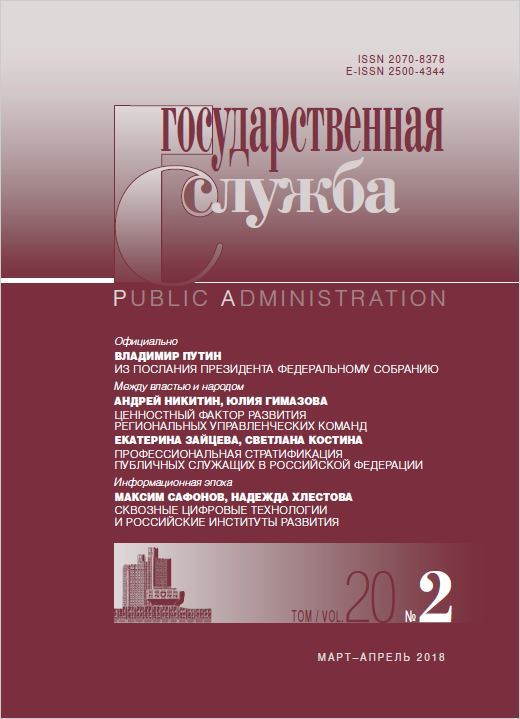Рекомендуемая ссылка на статью:
Александр Лукич Гапоненкоа
Заурбек Таймуразович Мильдзихова
аРоссийская академия народного хозяйства и государственной службы при Президенте Российской Федерации
DOI: 10.22394/2070-8378-2018-20-2-87-92
Аннотация:
В статье рассматриваются пути развития обучающихся организаций. Показано, что подобные организации используют разнообразные формы развития персонала: индивидуальное и групповое, традиционное и в процессе деятельности, а также тренинги, консалтинг, коучинг, менторство, ротацию. Организации, не стремящиеся к обучению и не учитывающие перемены в окружающей среде, по мысли авторов, не могут преуспеть. Поддержание непрерывного интерактивного обучения является сегодня одним из основных факторов сильного конкурентного положения на рынке. Авторы показывают, что в обучающейся организации значимость сотрудника определяется его навыками и умениями, в то время как в традиционных компаниях главным критерием является его должность. В обучающихся организациях сотрудники самостоятельно принимают решения, касающиеся их участков работы, тогда как в традиционных чаще всего они являются только исполнителями. В обучающихся организациях изменяются нормы и правила, которых придерживаются сотрудники этих организаций, в наилучших из них культивируются лояльность и доверие к компании. В традиционных чаще всего есть окостенелость внутренних процессов и структур. В статье предложены рекомендации по развитию организации как обучающейся, с использованием подходов управления по ценностям.
Ключевые слова:
обучающаяся организация, корпоративная культура, управление по ценностям
Дата поступления статьи в редакцию:
12 февраля 2018 года
Литература:
Виссема Х. Менеджмент в подразделениях фирмы (предпринимательство и координация в децентрализованной компании). М.: ИНФРА. М, 1996.
Гайсельхарт Х. Обучающееся предприятие в ХХ1 веке. Пер.с нем. Калуга, «Духовное познание», 2004.
Гапоненко А.Л., Савельева М.В. Теория управления: Учебник. М.: Издательство Юрайт, 2013.
Нонака И., Такеучи Х. Компания – создатель знания. Зарождение и развитие инноваций в японских фирмах / Пер. с англ. М.: ЗАО «Олимп – Бизнес», 2003.
Сайдман Д. How. Отношение определяет результат. М.: Манн, Иванов и Фербер, 2013.
Сенге П. Пятая дисциплина. Искусство и практика самообучающейся организации. М.: ЗАО «Олимп-Бизнес», 2003.
Хэмел Г. Манифест лидера: Что действительно важно сейчас. М.: Манн, Иванов и Фербер, Эксмо, 2013.
Bonfour A. The Management of Intangibles. The organisation’s most valuable assets. L., N.Y., 2003.
Caniëls M.C.J., Neghina C., Schaetsaert N. Ambidexterity of employees: the role of empowerment and knowledge sharing. Journal of Knowledge Management, (2017). Vol. 21. Issue: 5.
Chiva R. The learning organization and the level of consciousness. The Learning Organization, (2017). Vol. 24 Issue: 3.
Naim M.F., Lenka U. Linking knowledge sharing, competency development, and affective commitment: evidence from Indian Gen Y employees. Journal of Knowledge Management, (2017). Vol. 21 Issue: 4.
Palos R., Stancovici V.V. Learning in organization. The Learning Organization, (2016). Vol. 23 Issue: 1.
Pedler M., Burgoyne J.G. Is the learning organisation still alive? The Learning Organization, (2017) Vol. 24 Issue: 2.
Reese S. (2017) Analyzing the loops and taking the steps on the journey toward a learning organization. The Learning Organization, Vol. 24 Issue: 3.
Sanchez-Casado N., Navarro J.G.C., Wensley A., Tomaseti-Solano E. Social networking sites as a learning tool. The Learning Organization, (2016). Vol. 23 Issue: 1.
Starbuck W.H. Organizational learning and unlearning. The Learning Organization, (2017). Vol. 24 Issue: 1.
Tuggle F.D. Gaps and progress in our knowledge of learning organizations. The Learning Organization, (2016).Vol. 23 Issue: 6.
Статьи в режиме Open Access публикуются в соответствии с лицензией Creative Commons Attribution 4.0 International (CC BY).

